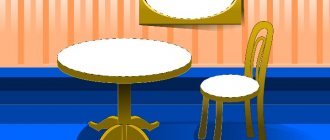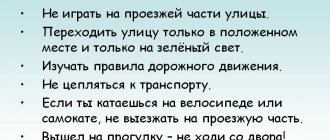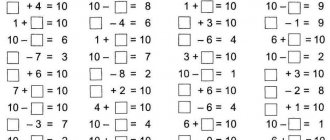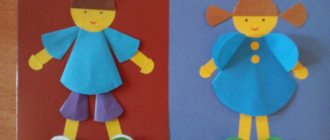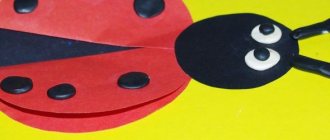Members of the sentence: where to start?
The first place to start is to define what a proposal is. These are several words that are connected logically and intonationally. Most importantly, there is a grammatical basis, which consists of a subject and a predicate. The first main term denotes an object or person who performs some action. The predicate will tell about it.
You may be interested in:Minsk Energy College - a place to obtain a sought-after profession
Another important point is the definition of the word with which the sentence begins, as well as the total number of words. For example, “Mom is reading a book.” The first word in the sentence is “mother”, and there are three words in total. Now we need to find the grammatical basis. The first question is: “Who?” This means we are talking about an animate object. Second question: “What does it do?” It refers to the verb. It remains to define the word “book”, which is a minor member of the sentence, an addition.
Goals and objectives
The goal of the “Make a Sentence” game is to develop the lexical elements of speech and improve grammatical structure.
Tasks:
- expansion of individual vocabulary;
- learning the skill of composing simple and prepositional sentences;
- developing the ability to select homogeneous members, as well as qualities and actions for objects;
- learning the skill of expanding a sentence by adding different members;
- development of coherent speech, the ability to build a dialogue, answer and ask questions in detail and competently;
- vocabulary enrichment;
- development of imagination.
Construction of elementary circuits
You might be interested in:A den is a place for a wide variety of animals to sleep and rest.
A sentence is a semantic unit. The first begins with drawing up simple diagrams. They indicate the boundaries of the beginning and end of a sentence. There is no word count here.
- The guys are walking. I________.
- Mother is washing the dishes. I________.
Such diagrams show that the sentence is a complete unit and therefore complete. It is important to teach children how to outline a sentence in 1st grade, as this will help them find a syntactic unit in a text. Subsequently the structure will be more complex. There will be as many lines as there are words. These include all independent and auxiliary parts of speech.
If a child learns to make diagrams, he will understand where one word ends and another begins. This means that they will be written separately. A systematic graphic representation of sentences shows that they always begin to write it with a capital letter. This is where you need to put a vertical line.
Depending on the purpose of the sentence: narrative, motivating or exclamatory, a certain punctuation mark is placed at the end.
- The sun is shining brightly outside. I__ ____ ____ ____ ____.
- Children are sledding. I___ ____ __ ____.
- We're going to the sea! I___ ____ _ ____!
- Will you help me do my homework? I____ ___ ____ ___ ____?
LiveInternetLiveInternet
Quote from Tatyana57
Read in full In your quotation book or community!
GAMES WITH SUGGESTIONS FOR CHILDREN 5 YEARS OLD.
GAMES WITH SENTENCES. COMPLETE A PATTERN. Write words on cards in different grammatical forms. Invite your child to choose suitable words and make up phrases (connect them with arrows or put them next to each other if the words are written on cut cards). For example: A NEW DRESS THE TIME HAS COME NEW YEAR THE CHILDREN HAVE COME NEW TOYS HAVE COME SON NEW APARTMENT DAUGHTER HAS COME Remember about the “extra” answer option to increase the intensity of the task! How to do this in such tasks? For the first task: either remove one word (“new”, for example) or add a word (“car”, for example). Same for the second task: add or remove one word. WHAT WORD IS LOST? The exercise helps you learn to comprehend the meaning of prepositions. Write phrases that include prepositions, write the prepositions themselves on separate cards. Invite your child to “put” the “little words” back into place. A complicated version: the child is not given prepositions, he himself guesses which word is missing and writes it in. For example: TEA _ SUGAR CAT _ SOFA SUIT _ CLOSET DOG _ FROM THE FENCE CAME _ STORE BOOK _ ANIMALS ON, IN, WITH, FROM, FOR, ABOUT, FROM (“extra” answer option). PICK UP THE ENDING. Write phrases consisting of an adjective and a noun or a verb in the past tense and a noun, write the endings of adjectives and verbs on separate cards, the child must put the endings in place. Provide “extra” answer options! LOUD_ SOUNDS LOUD_ SONG LOUD_ SINGING LOUD_ VOICE TIME WAS RUNNING_ BOYS RUNNED_ VERA RUNNED_ -A, -O, -I. When reading the assumptions at first, there may be an effect of repeated repetition of the words read. Just as in the case of repeating syllables when reading words, this helps the child understand what he read more easily and not forget the first words by the time he reads and understands the last words of the sentence (“Lena, ate, Lena ate, raspberries, Lena ate raspberries”). There is no need to prevent such reading: soon the child will learn to quickly understand the sentence read without repeating words. But to make it easier to read sentences, you can use sentences in which pictures are inserted instead of some words, then the number of words that need to be comprehended when reading will be smaller, which means it will become easier to read the sentence. Before you let your child read a sentence, make sure that it does not contain long complex words. If such words appear in a sentence, offer to read them to the child in advance; if necessary, help him read and understand this word. Sentence + picture For the exercise, you will need several plot pictures. The adult comes up with and writes down sentences for these pictures on separate cards (one or several for each picture), the child reads the sentences and determines which pictures they go with. CUT OFFERS. For this task you need to write sentences on cards and cut them into words. The child reads the words and makes a sentence out of them. You can add extra words to the set of words of a sentence that do not fit the meaning or form of the word, for example: Sveta from in the sketchbook drew Sveta on the plate in the album drew Sveta drew in the album To facilitate the completion of the task, you can first use plot pictures based on the content of the sentence, this will help the child quickly comprehend the options for possible relationships between the proposed words. Once your child has mastered reading sentences, you can begin reading short texts. When working with text, another level of comprehension of what you read appears—an understanding of the sequence and cause-and-effect relationships of the events described in the text. To facilitate reading comprehension, it is important to ask as many different questions as possible about the text, and the child can answer in his own words or read the answer from the text. At this stage of learning to read, you can also play entertaining games with your child. TITLE FOR THE STORY. Goal: learn to read text, learn to understand what you read, develop speech. Age: from 5 years. What you will need: any text (from the Primer or ABC), paper, colored pencils or markers. How to play? First, select a text from 4-6 simple sentences for the game. Read it yourself, come up with a title. On a piece of paper, write 3-4 options for the title of the story, and only one of them should be suitable for its content. For example, for the story below you can suggest the following titles: At sea / For berries / Good in the forest / Lost. ONE DAY KATYA WALKED WITH GRANDFATHER TO THE FOREST. THERE SHE COLLECTED FLOWERS AND LEAVES. KATYA MADE A BEAUTIFUL BOUQUET. AND GRANDFATHER FOUND A LOT OF STUFF. THEY RETURNED HOME HAPPY. Invite your child to read the story and choose an appropriate title for it. MAKE A STORY. Goal: learn to compose text from sentences, develop thinking. Age: from 5 years. What you will need: any text (from the Primer or ABC), paper, colored pencils or markers, scissors. How to play? Select a text from 3-6 sentences. The number of words in each sentence should not exceed 6. Use colored markers or pencils to write sentences from the text on separate strips of paper. Or write the whole text first and then cut it into sentences. It will be more accurate if you use the capabilities of a computer to type the text of the story. Example sentences for the game: THE PERFORMANCE WAS LONG / THEY ASKED MOM TO TAKE MORE TICKETS / IRA AND SVETA TODAY MOM TOOK TO THE THEATER / THE GIRLS LOVED THE THEATER / THE GIRLS WEARED ELEGANT DRESSES / THE ARTISTS SINGED AND DANCED ON STAGE / . Ask your child to read each sentence separately, guess what the whole story is about, and put the sentences in the correct order. This type of work helps to develop an understanding of the cause-and-effect relationships of events. COME UP WITH THE ENDING OF THE STORY. The child reads the story, but not to the end. He comes up with how the story might end, checks his guess, reading to the end. Do not forget to praise the child both if he guessed correctly and if he came up with his own original ending to the story. PLACE THE DOTS. Goal: learn to determine the boundaries of sentences in a text, learn to understand what you read, develop speech. Age: from 6 years. What you will need: any text (from the Primer or ABC), paper, colored pencils or markers. How to play? To play the game, write on a piece of paper or print out a text consisting of 3-6 sentences. Do not place punctuation marks (it is advisable that only periods appear in the text). Tell your child that all the dots have disappeared from this story, so it has become impossible to understand its meaning. Invite your child to read a “strange” story and try to determine where one phrase ends and the next one begins, that is, to place the dots correctly. For example: THEY BUYED A DOLL FOR LENA THE DOLL WAS A WHITE DRESS THE GIRL LIKED THE DOLL SHE ROLL IT IN A STROLLER IN THE EVENING THE GIRL TOOK THE DOLL TO SLEEP WITH HER Or another example: YURA AND MOM WERE IN A GROVE THERE WAS A WHOLE SWARM OF MOSQUITOES A BOY I HID MY HANDS FROM THEM MOM LIGHTED THE FIRE THERE'S AFRAID OF MOSQUITOES SMOKE THIS WAS A SALVATION FROM THEM PROPOSAL + PICTURE. For the exercise you will need several plot pictures. The adult comes up with and writes down sentences for these pictures on separate cards (one or several for each picture), the child reads the sentences and determines which pictures they go with. NOTES. Goal: learn to read simple sentences, learn to understand what you read. Age: from 5 years. What you will need: a small “surprise” (this could be a new toy, a book or magazine, pencils or paints, a chocolate bar, a theater ticket or something else that you would like to give to your child), paper for notes, envelopes, a felt-tip pen. How to play? Write in the first note: “Look under the book.” Do not hide this note; it will need to be given to the child first at the beginning of the game. In a note that you later hide under the book, write: “Look under the pillow.” In a note that you will hide under your pillow, write: “Look in the refrigerator,” etc. The first time, write 3-4 notes. In the last note you need to write where the surprise itself is. Before starting the game, place the notes in envelopes and the envelopes in the places planned for them. Tell your child that you have prepared a surprise for him, just hidden it, and invite him to play - find the surprise using the clues. Or tell him that the child received a letter from his favorite fairy tale character, but he must read the letter himself, because his name is written on the envelope. How much joy your child will have when he finds a surprise! And most importantly, he will enjoy not only the surprise itself, but also the process of searching for it. After a while, the notes may become a little longer, for example: “Check the mailbox,” “Come to the door,” “Stand with your back to the door,” “Take 5 steps straight.” You can use instructions consisting of several sequential commands, for example: “Sit down and look to the right,” and then more complex commands, for example: “Look in the top drawer of the chest of drawers,” “Take out the note from the left pocket of your jacket.” The number of command notes that must be executed to find a surprise can also be gradually increased. Options: Games of this kind are very good to play outdoors - in the park, in the forest, at your summer cottage. To organize a game in nature, use notes with similar content: “On a birch branch”, “Look at the stump”, “Look under the tree”, “Read what is written on the sand”, etc. The game will help diversify the rest on the playground. Invite the team of guys to find a surprise. Use command notes like the following: “Three steps to the right of the swing,” “Hidden under the slide,” “Look at the carousel,” “Dig in the middle of the sandbox,” etc. CONTINUE THE SENTENCE. Goal: learn to read simple sentences, expand your vocabulary, develop speech. Age: from 5 years. What you will need: paper or cardboard, colored pencils or markers, scissors. How to play? On cards made of paper or cardboard, write several sentences that are similar in form, but different in meaning. Don't write the last words in sentences, leave space for them. For example: A COW CHEWS ___________. THE DOG IS GETTING ___________. NASTYA EATS __________. Write the last words of the sentences on separate cards in the same color and font as the sentences (HAY, BONE, porridge). Invite your child to carefully read the sentences and add (arrange) words that suit their meaning. When completing the task, you may get “funny” sentences, rejoice with your child! To play the game, you can use the suggestions below and similar ones. THE DOG IS SLEEPING IN ________. SASHA LIES IN _________. THE COAT IS HANGING IN _________. (BOOK, BED, WARDROBE) THE SALESMAN WORKS IN ________. THE TEACHER TEACHES IN _________. THE DOCTOR IS CONDUCTING AN APPOINTMENT AT __________. (STORE, SCHOOL, HOSPITAL) IT IS SNOWING _________. YOU CAN SWIM __________. LEAVES FALL __________ . THE BUDS ARE BLOWING __________. (WINTER, SUMMER, AUTUMN, SPRING) FLYING FAST ________. SWIMMING IN THE SEA ________. I PUNCHED THE WHEEL ________. ________ ROWS ON THE RAILS. (PLANE, SHIP, CAR, TRAIN) RIDDLES. Goal: to develop the skill of meaningful reading of sentences, to develop thinking. Age: from 5 years. What you will need: paper, object pictures, scissors, colored pencils or markers. How to play? You can also learn to read with the help of riddles. No child will be left indifferent to the riddle. But those riddles that are found in children's books will not soon be available for your child to read independently. Try to create accessible riddles yourself. For the selected subject pictures, come up with riddles consisting of several simple sentences. Cut each picture into two parts: make one much larger than the other, cut horizontally or vertically. Write riddle sentences on large parts of the pictures on the reverse side. Write the answer words on the smaller parts of the pictures on the reverse side. Invite your child to read simple sentences and guess from the description what they are talking about. Then find the right word and connect the two parts. If the guess is chosen correctly, then on the back of the folded parts you will get a picture answer. Use 3-8 riddles to organize each new game; it is advisable to compose riddles each time on one general topic. On the topic “PETS” you can make the following riddles: Gives milk. Her children are called kids. (GOAT) Loves its owner. Lives at home or in a booth. (DOG) Fluffy and affectionate. Catches mice. (CAT) With horns. Gives milk. Not a goat. Moos. (COW) Loves cabbage and carrots. Looks like a hare. (RABBIT) For the topic “TRANSPORT”, prepare the following riddles: Passenger urban transport. Rides on rails. (TRAM) Used to transport goods. He knows how to unload the load himself. (DUMP TRUCK) Floats. Without a pipe and without a sail. Need oars. (BOAT) Can fly. Rises up vertically. (HELICOPTER) Starts with the letter M. Travels underground. (METRO) For the theme “TREES” you can use these riddles: Always green. Not a Christmas tree. (PINE) There are no red leaves on it in autumn. The fruits are acorns. (OAK) Wears earrings. The bark is white. (BIRCH) Deciduous tree. The berries are red. (ROWAN) Tree. The first letter is T. The last letter is B. (POPLAR) In a similar way, you can make up riddles on any topic that interests your child. GUESS WHAT'S NEXT? Goal: learn to read sentences, learn to understand what you read, develop speech, develop thinking. Age: from 5 years. What you will need: paper, colored pencils or markers. How to play? Write or print the sentences from the list. Invite your child to read them one by one and imagine what could have happened after the event described. Praise the child if he was able to name several answer options. Use these and similar sentences: THE LIGHTS WENT OUT IN THE ROOM. PETYA BREAKED THE VASE. IT'S GOT WARM OUTSIDE. IT RAINED HEAVY. ANYA WAS SIX YEARS OLD. TOLYA EATED ICE CREAM ON THE STREET. THE BOYS HAD A FIGHT IN THE YARD. WE BOUGHT TRAIN TICKETS. The bell rang from class. MOTHER CAME FROM WORK. Option: Invite your child to come up with reasons why the events described in the sentences could have happened. SNOWBALL. Goal: to develop the skill of meaningful reading of sentences, to develop reading speed. Age: from 5 years. What you will need: paper, colored pencils or markers. How to play? Prepare strips of paper of the same width. On each, write words to make one sentence. Place one word in front of the child first and let him read it. For example, GARDENER. Then add a second word that is related in meaning to the first. For example, THE OLD GARDENER. Add a third word and have your child read again. THE OLD GARDENER IS WATERING. Add a new word, again invite the child to read the sentence. AN OLD GARDENER IS WATERING FLOWERS. So add up to 5-7 words. For example, an OLD GARDENER WATERS THE FIRST FLOWERS IN A FLOWER FLOWER. This exercise will allow the child to overcome the fear of reading long sentences, because with a gradual increase in the number of words in a sentence, it is easier for the child to read and understand what is read. THE OFFER FALLED UP. Goal: learn to read simple sentences, learn to understand what you read, develop speech. Age: from 6 years. What you will need: paper or cardboard, colored pencils or markers, scissors. How to play? For this game, write simple sentences on cards and cut each sentence into words. Tell your child that the sentences have fallen apart and need to be put together again. The child needs to read each word and arrange the words in a semantic order. Choose or create sentences consisting of 3-6 words. For example: A CAT LICKS MILK. SPRING WILL BE COMING SOON. NATASHA WAS DRAWING IN THE ALBUM. CHILDREN CONGRATULATED MOM WITH A CARD. IN THE SUMMER WE WILL GO TO THE Cottage. THE SHIP WAS QUICKLY APPROACHING THE SHORE. CARLSON FLY IN TO VISIT THE BABY. THE TEACHER PRAISED THE STUDENTS FOR THE CORRECT ANSWERS. To make it easier to complete the task, you can first use plot pictures that correspond to the content of the sentence. This will help the child quickly comprehend the options for possible relationships between the proposed words. You can also replace some words of sentences with object pictures. To make the tasks more fun, add 1-2 extra words to each set of words that do not correspond to the meaning of the sentence. For example: THE SHIP, APPROACHED, SAILED, QUICKLY, TO, THE, SHORE, STORE. Option: Mix up the words of 2-3 sentences. Let the child make sentences at the same time. Remember that in this case the words of the sentences must be written in the same color and font. DO IT ONE, DO TWO. Goal: to develop the skill of meaningful reading of sentences, learn to remember what you read. Age: from 6 years. What you will need: paper, colored pencils or markers. How to play? Write short command sentences on separate cards. For example: “Raise your arms up”, “Clap three times”, “Squat down five times”, “Do two forward bends”, “Jump on your right leg”, “Take four steps back”, “Put your left hand down”, “Run to doors”, “Turn to the window”, “Walk like a bear”, “Stand on your left foot”, “Turn around yourself”, etc. Invite your child to do exercises. Stand opposite the child and show the cards with the commands in random order, let the child read offers and execute the commands. First, offer to execute one command, then show 2-3 cards in a row and only after that allow the child to execute commands, recalling their order. Gradually increase the number of commands in one task to 4-6. You can repeat the same team several times in a row or alternately with other teams. EXHIBITION OF PAINTINGS. Purpose: to learn to read sentences, to form the skill of meaningful reading of sentences. Age: from 5 years. What do you need: plot pictures, paper, colored pencils or felt -tip pens. How to play? The exercise will require several plot pictures. For example: “In the store”, “On the playground”, “Birthday”, “Help mom”, “Family”, etc. Invent and write down and write down on individual cards to the sentences for these pictures (one or several for each picture) Let the child read sentences and determines what pictures they are suitable for. The sentences can be glued to the pictures, gradually replenishing the list of sentences compiled on the topic of the picture. Make proverbs. Purpose: to form the skill of meaningful reading of sentences, replenish the vocabulary, develop thinking. Age: from 6 years. What do you need: white or bloom of cardboard, circus, simple pencil, scissors, colored pencils or felt -tip pens. How to play? Cut circles of the larger size from cardboard. Cut all circles in half. In the halves of each circle, write proverbs, dividing them into two semantic parts. For example: rainy summer / good there / Better late / sewed in a bag / worse than autumn / where we are not / than never / you hide. Do this work without the participation of the child. Lay out the halves of the Z-6 proverbs in front of the child, ask to collect proverbs, read and explain their meaning. You can use proverbs from the list or like them for the game: you can’t easily pull out a fish from the pond. Mal Ant with a body, but a great business. Small spool but precious. As it comes back, so will it respond. A good example is worth a hundred words. Hare hasten, you laugh. If you want to eat kalachi - don't sit on the stove. If you love to ride, you also love to carry sleds. The word - not a sparrow, fly out - you will not catch. Measure seven times, and cut once once. Of course, the simultaneous compilation of proverbs on one topic will be useful. For example, on the topic "Friendship": friendship is not a mushroom, you will not find in the forest. There is no friend - look, but found it - take care. Stand for the truth by a mountain, then friends with you. You can’t cut the right friendship and ax. Or on the topic "Study": the case is time, and the fun is an hour. It's hard to learn, but it's easy to fight. If you want to know more - you need to sleep less. Who reads a lot, he knows a lot. Take the book in your hands - there will be no boredom. The bird is red with a pen, and the man with the mind. Live and learn. This approach to the organization of the game will allow the child to understand the meaning of proverbs in all his subtleties. And the adult will give more opportunities for explanation. Option: invite the child, connecting the beginning and end of different proverbs, make proverbs with new content, even comic. For example: you like to ride - don't sit on the stove. Live a century - don't stick to the water. Hurry up, then friends are with you. You can’t conceal a good example. The word is not a sparrow, you will not find in the forest. Insert the ending. Purpose: learn to read sentences, learn to understand what has been read, develop speech. Age: from 6 years. What do you need: white or colored cardboard, scissors, colored pencils or felt -tip pens. How to play? From cardboard, cut the strips about 3-5 cm wide. Write offers with missed endings on them. For example, such: the river is deep_, and the stream is Melk_. The elephant is big, and the mouse is small_. Salt salt_, and sugar is sweet_. The sky is blue_, and the sun is yellow_. At home is high_, and the huts are low_. The weight is heavy_, and the ball is light_. Squirrels Ryzh_, and hares bel_. On the cards are the same width as the strips with sentences, write the endings: aya, oh, yaya, she, her, and, th, and, th. Ask the child to decompose the desired endings to each sentence. To verify the correctness of the task, invite the child to read each sentence entirely after the ending of the ends. Option: If it is difficult for a child to read long sentences, this exercise can be carried out with phrases. Write the words on the cards: m0kr_ road, mochrise, mokr_ hands, mokr_ umbrella or new house, new book, new friends, new obstacle. Use the same endings.
Display in spelling schemes
Before they create a sentence diagram in 1st grade, they first learn spelling patterns. The first is the capital letter in proper names. The names of cities, names of people, names of animals begin with it. In diagrams it is indicated using a vertical bar. They act as a visual aid, with the help of which they consolidate already acquired knowledge.
- Petya and Vanya will go to their grandmother in the summer. I_____ _ I_____ ____ _____ __ _____.
- Alena loves candy very much. I____ _____ _____ ____.
- Dad helped Rita and Kostya do their homework. I____ ____ I____ _ I_____ _____ ____ ____.
- Moscow and Volgograd are located in Russia. I___ _ I____ ____ __ I____.
Later, children learn about such a concept as dialogue. In the alphabetic period, the first knowledge about direct speech is laid. Students learn that sentences begin with a capital letter, and each new line is preceded by an unusual dash sign.
-Who ate all the candy? — I___ __ ___ ___?
- Children! - I___!
Children already in the 1st grade are drawing up a sentence diagram with all punctuation marks. This will help you write words correctly, and when reading, highlight punctuation marks using intonation.
Algorithm for constructing a circuit
“Make a sentence diagram,” - tasks in 1st grade most often sound like this. It's not difficult to do them. It is enough to follow a simple algorithm. The main rule is as many words as there are as many lines. How many words are capitalized, so many vertical lines.
Students follow this algorithm:
- Read the proposal.
- Establish meaning.
- They identify spellings in the form of words that are written with a capital letter.
- Determine the type of sentence: narrative, reasoning, question. The placement of punctuation marks depends on this.
- If there is dialogue, put a dash.
- Count the number of words, including prepositions, conjunctions and particles.
After this, you can draw the diagram in your notebook. It is important not to forget about all spellings.
Making a plan for a simple proposal
We need to put together a simple sentence diagram. We won’t go far, let’s take an example from primary school:
Simple sentence diagram
This sentence is two-part - it has two main members. There are also one-part sentences in which the main member is only one of the two. If a sentence does not have minor members, then it is not widespread (“Poems were born”), but if it does, then it is widespread (as presented above). Also, sentences have an incomplete or complete form (depending on whether the necessary members are present in the configuration - abbreviated or complete). Avoid mistakes with predicates when drawing up a graphical diagram of a sentence:
- compound nominal predicates – Daniil will be an athlete
; - simple – Daniel swam
; - compound verbs – Daniel wanted to swim
.
Help in drawing up diagrams
To help a child create a sentence diagram in 1st grade, a sample is placed in front of the student. He must know where to start the analysis. It is better to start training with a simple sentence that consists of two or three words.
First, they write it down in a notebook, then they begin to analyze it. If it is difficult for a child to determine the number of words and what sign needs to be placed, an adult needs to speak the sentence. And the number of words can be missed.
It is important to pay attention to small words. These are conjunctions, particles and prepositions. When a child in the 1st grade draws up a sentence diagram, such words are highlighted with a small line. That is, already during training they show that such words are not equivalent to other members of the sentence.
How to outline a complex sentence
Fragments of a complex non-conjunctive and complex sentence are in an equal position, therefore rectangular brackets are used to designate them.
Non-union complex sentence on a graphic diagram
Rectangular brackets are used to indicate the main part in a complex sentence, and round brackets are used to indicate a subordinate clause. Moreover, the subordinate clause can appear anywhere: at the back, at the beginning, and even in the middle of the main clause.
Before drawing up a proposal plan, the source material must be carefully studied so that there are no difficulties with various types of communication. It happens that such sentences contain an important idea that is easy to lose when trying to simplify the text and rearrange parts.

